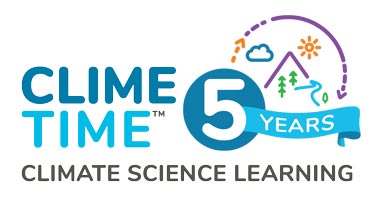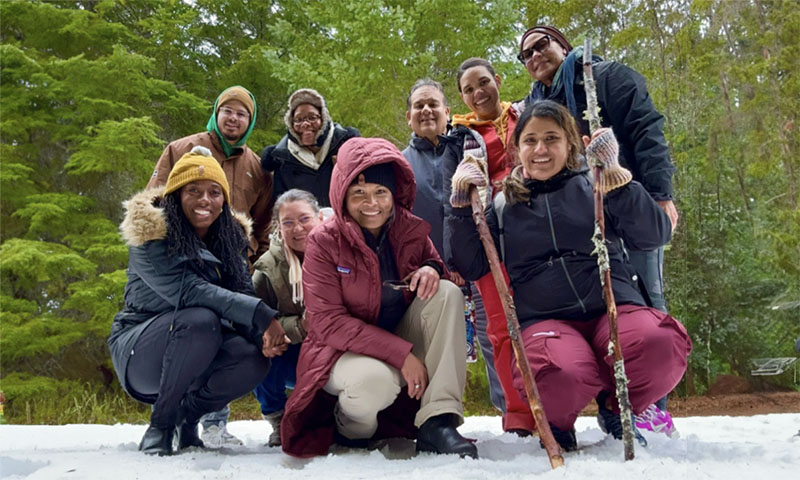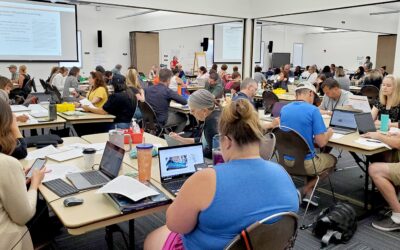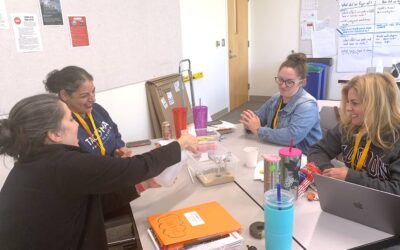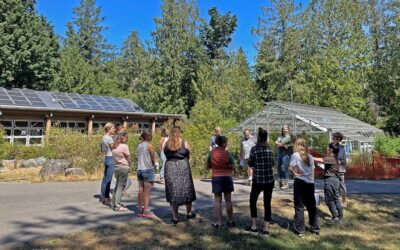In its 4th year of iteration, the Winds & Waters Learning Project continues to partner with the Muckleshoot Tribal members and Coast Salish environments, land, and sea to cultivate curiosity and interest through Indigenous epistemology. During this year-long, five session Huaka’i (learning journey) teachers have the opportunity to connect their own learning, and teaching, to Wahi Pana (Place with Story) and build an understanding of relationships and responsibility to the land and people.
Throughout the five-session Huaka’i journey (explained below), educators become more aware and knowledgeable about seasonal changes and deepen their understanding that science is always connected to land and culture. Teachers learn that Indigenous practices (science) are a relationship between humans and all the other human relatives around us.
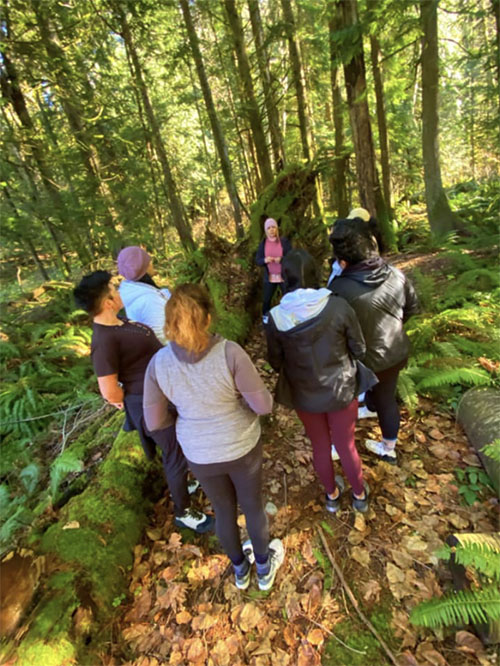
Participants come to more deeply know the forest through Traditional Ecological Knowledge
Huaka’i Day 1
The first Saturday of the Huaka’i provides a field-based experience designed to connect participants’ teaching about climate science with traditional ecological knowledge (TEK), the local environment, and community partners. Participants are introduced to the tribal lands of the area and learn about the history of its people. Participants learn alongside members of the community. They experience the traditional landscape and history of the local tribal communities, interconnecting multiple ways of knowing and reconnecting education and curriculum with environmental, racial, social, and justice.
During this day, participants experience tribal protocols, and understand the importance of land acknowledgments, and the interconnections between the people, cultural practices, waterways, species, and landscapes. This Huaka’i is an opportunity for educators to continue to build and understand their place within community environments, and begin making connections to classroom curricula addressing global, national, and local environmental issues and solutions. They also consider how social and emotional well-being are interwoven within their own and future student learning experiences.
Huaka’i Day 2
During day two of the Huaka’i, participants deepen their understanding and experience of seasonal shifts. Sui-lan deconstructs our way of thinking and language around the weather. One critical learning for participants is how most of society references colder and or rainy weather as bad or ugly and that these weaponized words make us fear the environment and disconnect us from what is valuable and necessary for life. Participants are exposed to the rain and colder temperatures in a way that allows them to be warmed as they learn how to experience the benefits of this time of the year. Participants make deeper connections to their professional, and personal lives, finding ways to utilize these teachings in living practice. They continue to express gratitude for taking them out of their comfort zones, gaining valuable information about the environment, the importance of climate, science, and history, and building relationships with the lands and people, but even more importantly learning about their own roles in climate, social, racial, and environmental justice education.
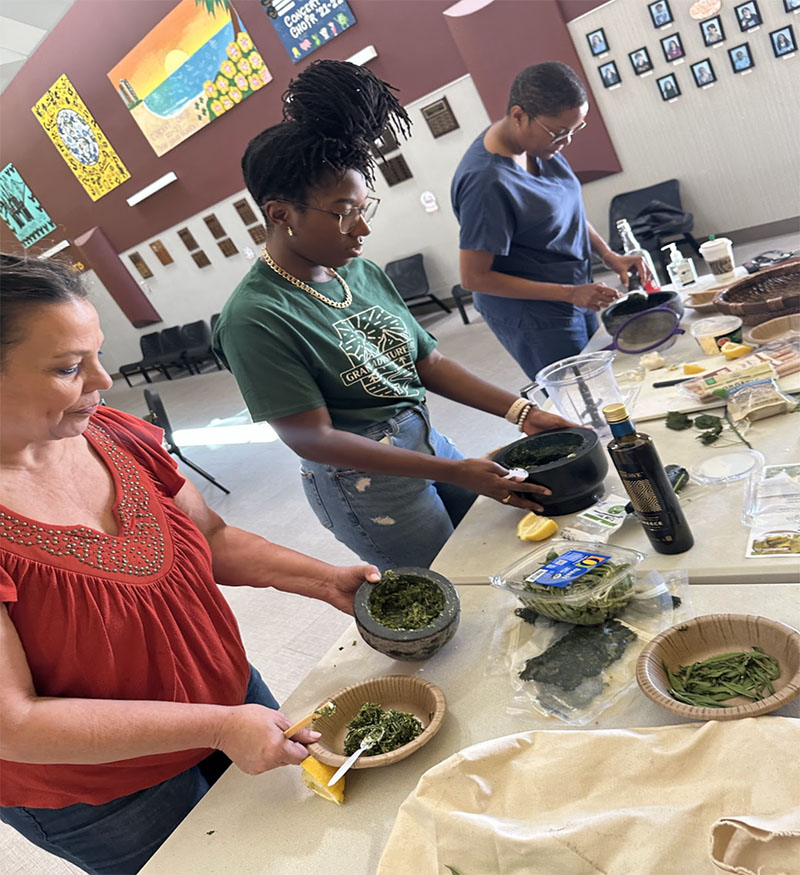
Hands-on learning exploration of Indigenous foods, herbal medicines, and plant technologies
Huaka’i Day 3
During this Huaka’i participants travel across Puget Sound to Vashon Island. Here they experience hands-on activities, exploring indigenous food traditions, herbal medicine, plant technologies, cultural ecosystems, tree communities, and the art of observation. Participants learn the history of sustainable food systems, the value of revitalizing indigenous edible and medicinal plant knowledge, and how we can utilize these experiences in teaching. This, as well as plant knowledge from other cultures, grounds participants in understanding who they are and what connects them to where they live.
Participants also experience the Tend, Gather, Grow curriculum which is infused throughout this Huaka’i. They continue to align Traditional Ecological Knowledge with mastery-based learning, problem-based learning, and STEAM through the exploration of an indigenous awareness of natural resources, and forest management practices, through the lens of Coast Salish plant traditions, ethnobotany, ecology, and environmental science.
Huaka’i Day 4
This Huaka’i is designed to help participants understand global warming, water pollution, and the environmental impacts in Puget Sound. During this journey, participants find evidence of the impacts of untreated surface water that has collected impurities from roofs, roads, developed areas, and other hard surfaces. This untreated stormwater ends up on Puget Sound lakes, streams, and rivers and impacts food and water sources here in Washington.
The Healing of the Canoe Curriculum is introduced. Here educators learn the history and environment of the Coast Salish Tribes and Washington. Using a curriculum entitled, Since Time Immemorial and the experience of an environmental immersion, educators build community connections to STEAM tools while learning from local tribal members, leaders, and cultural practitioners. They engage in learning alongside members of the community interconnecting multiple ways of knowing and reconnecting education and curriculum with symbiotic relationships to land, water, and community.
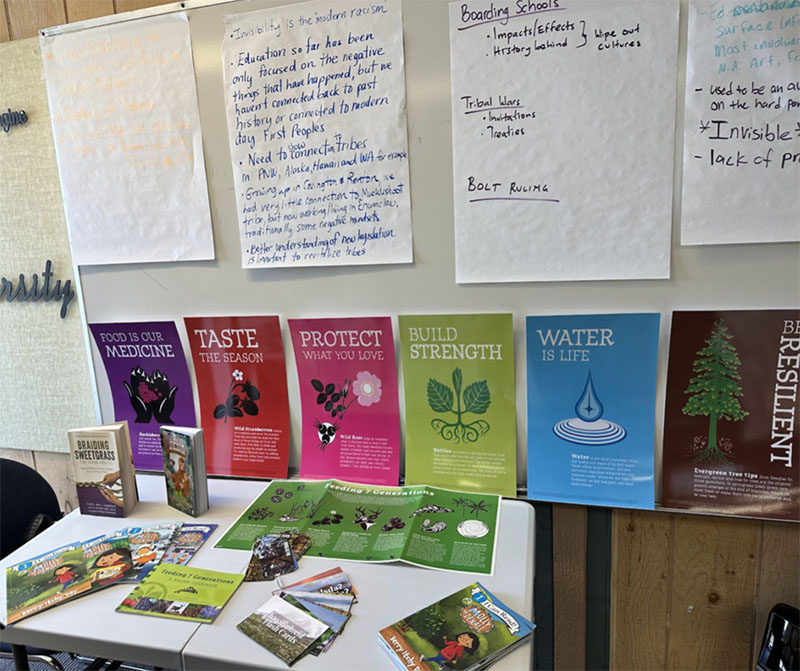
Resources to bring back into the classroom
Huaka’i Day 5
Our final step on our Huaka’i journey occurs in the spring, also known as nettle season. Valued among the people in the Pacific Northwest, it was important to have the participants learn about this Wahi Pana (place with story). This day’s learning included notions of ethical harvesting, the awareness of how to take only what you need, and the stance of being responsible to future generations. During this day, participants had many learning moments about the Nettle plant and its importance to the people in the Pacific Northwest. Because this is a seasonal learning experience, participants were able to experience the different stages Nettle went through; food, medicine, fiber for utilitarian uses and so much more. They appreciated the stories, lessons, and learning that Nettle and our practitioners had to offer. They began to understand the diverse ways Nettle serves the human and non-human community. These experiences allowed our participants to see firsthand how important relationships are. They also experienced the importance of learning in the environment, through story, with observations, to build a deeper understanding and relationship with the “whole,” a holistic approach to learning.
Finally, on this last day, participants connect all they have learned and to continue to create learning opportunities for their students. They consider ways to bring community, environments, stories to a co-collaboration with the native communities and places to engage young learners with human and other than human relations.
Participant Impact
Sui-Lan Hookano, a Cultural Practitioner and leader of the Huaka’i, hopes that this journey will help teachers come to deeply understand that “It is not enough to be conscious of the problems of the world, how we involve ourselves in the solutions is the most important thing that we could ever do in our journey.” The project embraces the idea that when we begin to experience and move towards these restorative practices, both Indigenous and non-Indigenous communities benefit. The teacher participants have been quick to recognize this and reflect on how their own relationship to the world around them and their school community has shifted, as well as their teaching practice. One teacher participant shared at the concluding session:
“As an educator all of these experiences had me questioning my part in environmental justice, racial justice, and those of my communities and the students, families, communities I serve. The importance of relationships not only among the community but with the environment as well was so impactful. I am beyond grateful for these opportunities and will forever carry the experiences in my heart and soul. I find myself hungry for more of these experiences, and isn’t that a part of education- to stay wanting more knowledge?! Who better than Indigenous voices to lead this work and how fortunate to have the Muckleshoot Tribe and others generously share their knowledge and good medicines with us. Truly a special professional development and one I hope to see continue as the benefits are beyond any I could name.”
